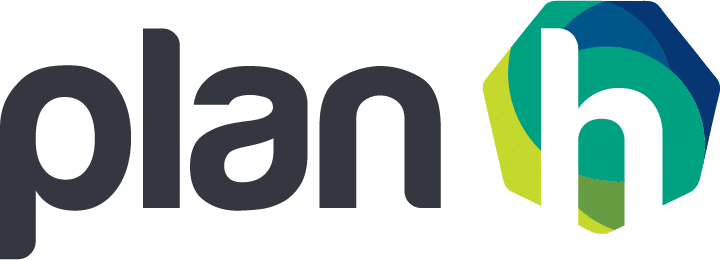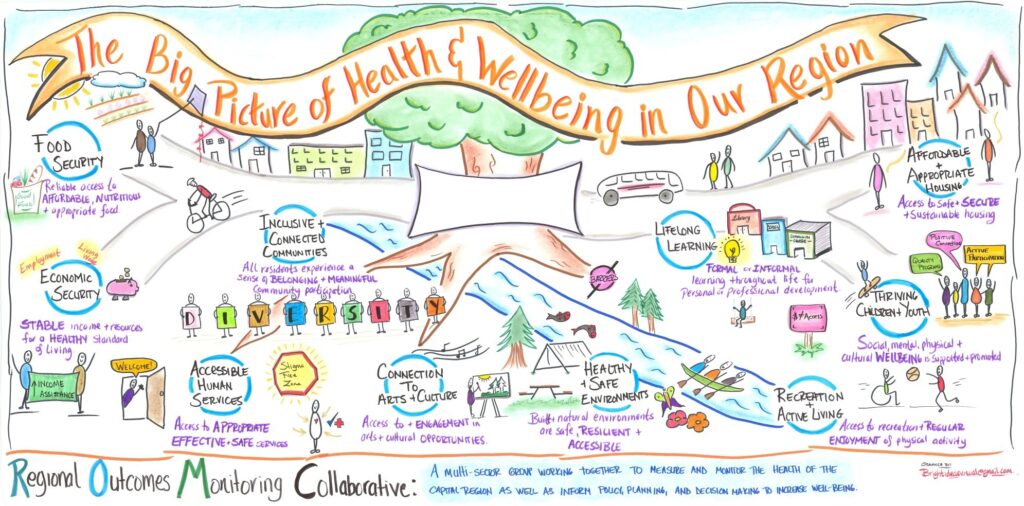Amanda Ng is a Healthy Communities Planner and the Community Health Network Coordinator at the Capital Regional District.
“Conversation is the natural way that we humans think together.” – Margaret Wheatley
There is so much power and brilliance that can emerge from the simple act of a conversation. Sharing ideas, uncovering different perspectives, and being curious – these are just a few treasures uncovered from a simple conversation. Community Health Networks (CHNs) bring people from diverse sectors to collaborate and generate action and alignment to impact health and well-being. Rather than focusing on healthcare services delivery, CHNs look at the social determinants of health. Health and well-being is a culmination of the social, economic, and environmental factors that influence how a person lives, works, and plays.
There are CHNs operating in each of Vancouver Island’s Regional Districts, including the CRD. Many of the social issues the CRD CHN focuses on are complex and require traditionally siloed systems to work together. CHNs use a collective impact model that emphasizes cross-sector partnerships and can be applied to complex social issues. The network serves as a convener or backbone organization to facilitate and support structure, planning, and community engagement.
The CRD CHN has representation from the health authority, local/regional/provincial government, academia, non-profit organizations, and funders. It is impressive and humbling to work aside the large number of passionate people in our community who are invested in improving health and well-being.
We focus our efforts on ten goal areas – listed here:

These ten areas all play a role in good health and well-being by taking on an upstream approach. An upstream approach to health is “focus[ed] on improving fundamental social and economic structures in order to decrease barriers and improve supports that allow people to achieve their full health potential (BCCDC Glossary, 2020).
With COVID-19 emerging in early 2020, there was a lot of information being shared and services being modified/emerging at a rapid rate. The need for coordination and facilitation across the region was very apparent. The CHN was a great avenue for folks from different sectors to convene and share priorities from their own areas and potential supports for others. We worked with one of our network members, the University of Victoria’s Centre for Youth and Society to develop a Community Resource Hub. Facilitating the sharing of information and resources has been an important role of the CHN in light of the pandemic. Understanding and raising awareness about the unintended consequences of the pandemic on our population, and especially those most vulnerable, warrant attention. For instance, really breaking down how the pandemic and physical distancing measures have impacted: seniors who are already feeling isolated, students and teachers suddenly having to adapt to learning online, unsheltered individuals unable to receive their regular mental health supports, or the sudden spike in unemployment rates due to small businesses and restaurants having to shut down. These are just a handful of impacts amongst the many unintended consequences our society has experienced from the pandemic. We need to raise awareness around these impacts, bring the right people to the table to explore and brainstorm potential solutions.
If you are part of an organization or network in the CRD who is focused on one or more of the ten areas (as listed above), please reach out to join the CHN. While we are always consulting with the community to keep a finger on the pulse of what programs/services are impacting health and well-being, we would love to hear from you. We have put together a Community Network Database showcasing all of the incredible networks in the CRD working around one or more of the social determinant of health areas. This database helps us further our collective impact model through identifying shared priorities, promoting more partnerships, identifying opportunities for shared funding applications (less competition for resources), and reducing duplication in efforts. Reach out and see how your organization/network can participate in bettering the health and well-being of residents in our region. There is so much power and wisdom in a collective. Never underestimate what you can learn from bringing a group of people together to talk about matters they care about. It will always surprise you, you will find areas of connection, and it reminds who we are as human beings. We are meant to work collectively and everything we do is connected. I would like to finish this blog post with one of my favourite Martin Luther King quotes, “We are caught in an inescapable network of mutuality, tied in a single garment of destiny. Whatever affects one directly, affects all directly.”
If there is interest in becoming a member of the Community Health Network (it is free!) or you would like to seek more information, please contact Amanda Ng at ang@crd.bc.ca or 250-360-3174. I would love to hear from you!




